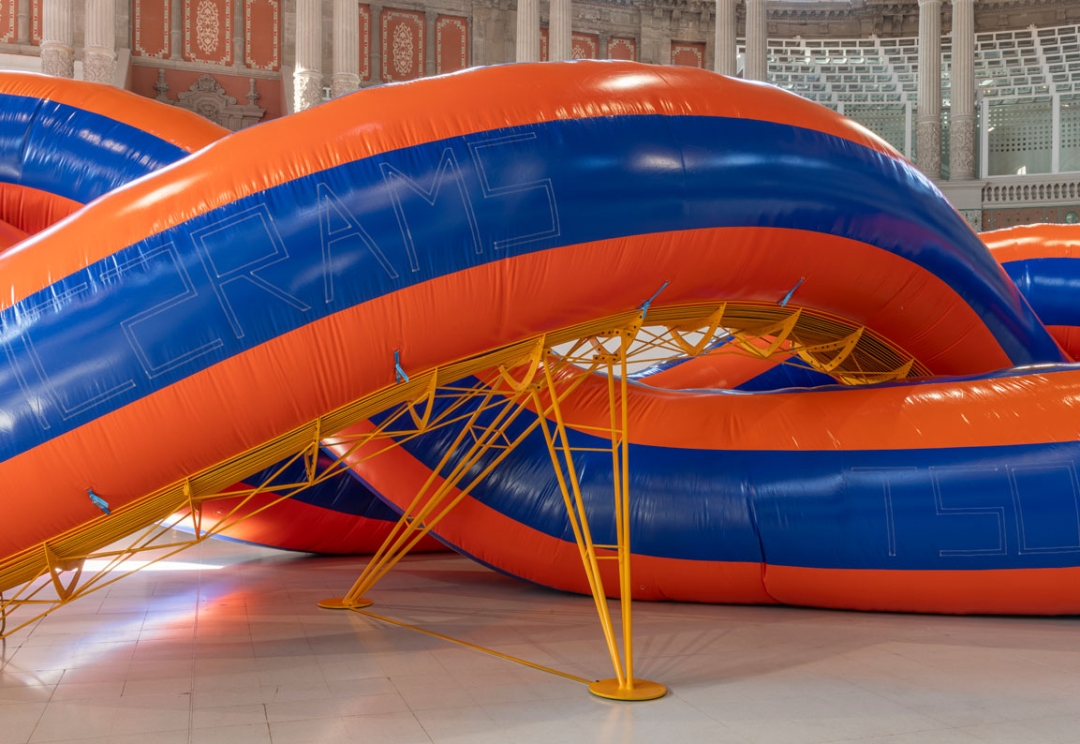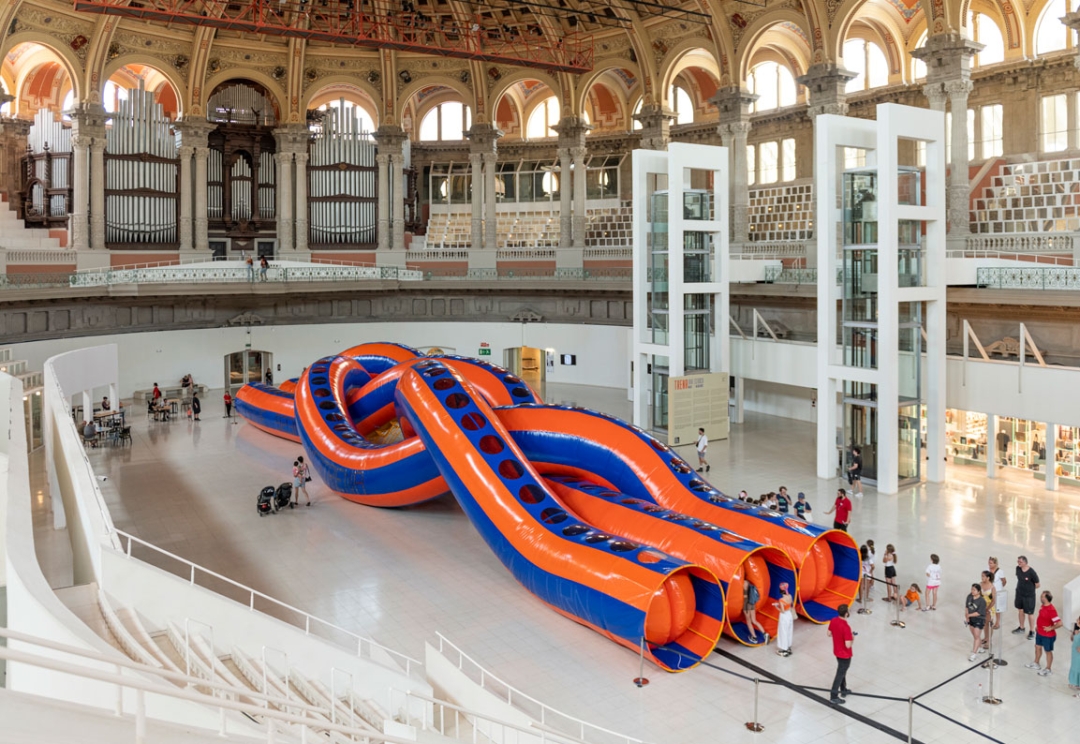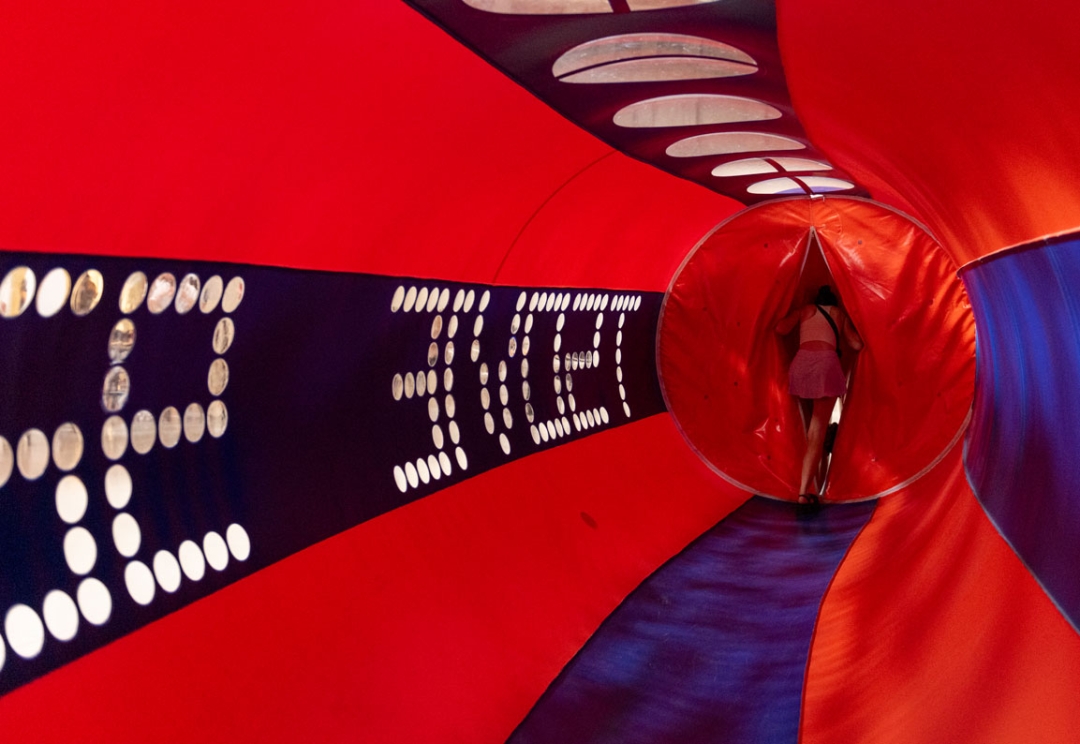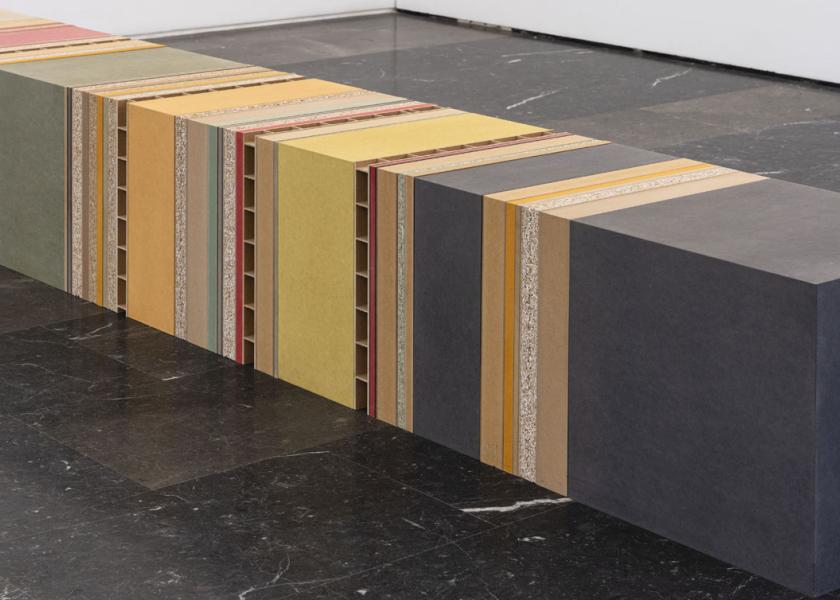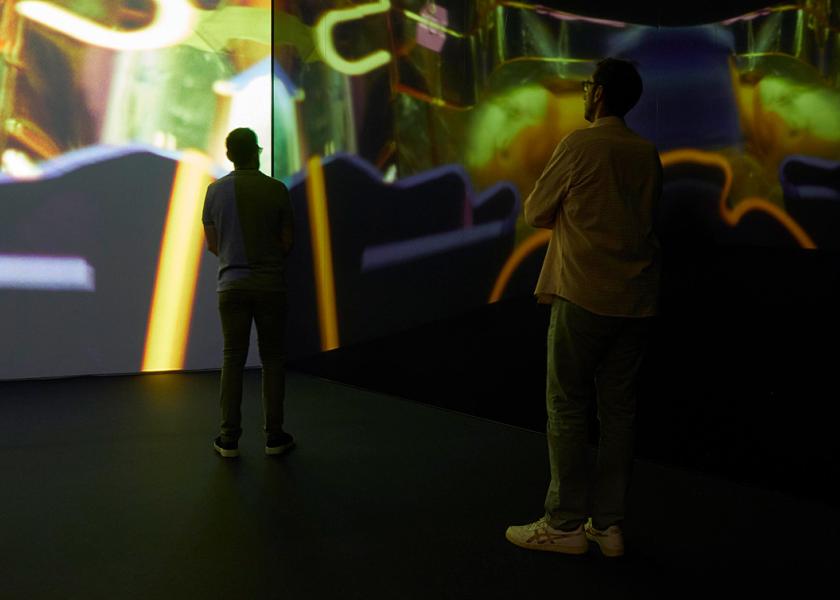Laia Estruch
Boundless art
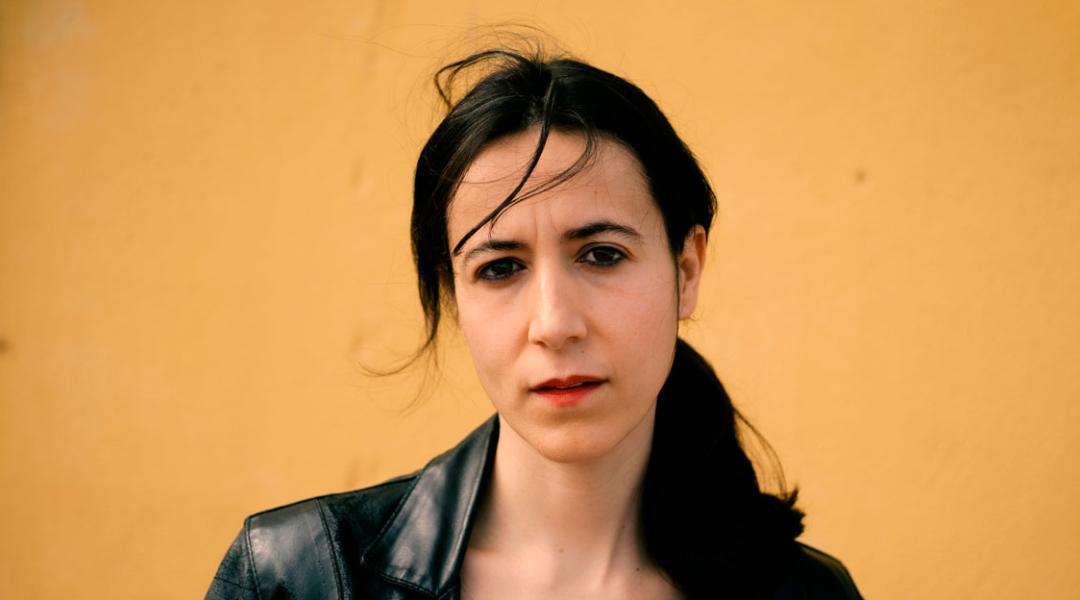
For Laia Estruch, art knows no bounds. Although her work stems from sculpture, it centres around the body, its movements and the voice. Something she explores through performance. Her most recent work, ‘Trena’, which was exhibited at the Sala Oval of the MNAC (Museu Nacional d’Art de Catalunya [National Art Museum of Catalonia]) last summer, was a huge challenge for her and she hopes that its success will help her to continue making progress in the world of art.
“The role of artists, especially those connected to contemporary art, is to continue working by seeking new languages.” Closely connected to sculpture and performance, Laia Estruch (Barcelona, 1981) knows her roadmap well and has befriended experimentation. Last summer —from the 7th of July to the 3rd of September— her most ambitious work to date, Trena, was exhibited at the Sala Oval of the MNAC (Museu Nacional d’Art de Catalunya [National Art Museum of Catalonia]), a space that has precisely turned into the epicentre of artistic experimentation in recent years. The public’s response, who could move around inside the sculpture, was fantastic and Laia, alongside Galería Ehrhardt Flórez, hopes that it can travel to more places: “The piece can be stored and transported. In fact, we’ve thought about its life thereafter. So, we’re working on a touring exhibition. We’re also trying to make Trena bring my work to an international audience.”
Where does your artistic side come from? Did you always know what you wanted to do?
Since I was little, I’ve always tended to be arty, but it wasn’t until I started studying art that I knew for sure. And now I’m thrilled because I’ve found my place. My mother is a chemist, but she’s always been really interested in photography, and the rest of my family also has that artistic side: I have a brother who’s a director of photography, an uncle who’s a sculptor, a cousin who’s a jewellery designer, and another cousin who’s also a sculptor.
From passion to talent, what is it to you and what role has it played in your career?
Once, when I got to an artist’s residency, I was asked: “And what about you, what’s your talent?” I was dumbfounded, I didn’t know what to reply. I believe all human beings are talented, but work is the most important thing. In my case, my talent is being brave enough to take on difficult and ambitious projects, but also persevering. At the beginning, I spent five years without my works following a schedule because it’s really tough, my talent lied in persisting and not giving up, continuing to work and investigate. I knew I wanted to devote myself to art.
“At the beginning, I spent five years without my works following a schedule because it’s really tough, my talent lied in persisting and not giving up”
The artist’s way is a long-distance race, as you say. Have you ever doubted yourself?
Never. I come from a single-parent household; my mother brought us up. She fought for us and welcomed me into her pharmacy, where I’ve been able to work as a chemist’s assistant while working on my art. I accepted that I needed to have two jobs, but when people ask me what I do, I always say I’m an artist. Because that’s what I am. I studied art in high school and then Fine Arts at university, it took a lot of hard work and I’m not going to give it up. Most of us who’ve worked in the world of art have had to fight for it. I’d love to be able to live off of art and now I’m starting to teach at the Faculty of Fine Arts at the University of Barcelona, where I studied.
Tell us, what’s the inspiration behind your creations?
My work stems from sculpture, but different lines of investigation converge. For example, sound: its volume, texture, speed, how it takes up space. My work is particularly vocal and self-taught, and goes beyond language. It’s related to phonetic poetry, but always connected to sculpture. The voice is unexplored territory; it is born in the human body, moves away, comes into contact with exterior elements and dies. How does the voice echo when it comes into contact with a certain architecture or landscape? This is one of the questions I ask myself.
“The sculptures are actors, companions with their own body, skin, elasticity, stiffness, and are in contact with me, they embrace me but also get me into trouble”
You’re an artist who’s hard to pin down. What role does experimentation play in your work?
The other side of my artistic work is performance. So experimenting is part of everything. I’m an artist who’s always looking and investigating; I combine materials but also concepts that allow us to understand the world around us in a different way. Although I do have a script, performance allows me to experiment live, broaden my research and go beyond. The sculptures are actors, companions with their own body, skin, elasticity, stiffness, and are in contact with me, they embrace me but also get me into trouble. I consider myself a sculptor and performer, but also much more, an artist that investigates through the body and its movements.
What has the chance to exhibit your work Trena at the Sala Oval at MNAC meant to you?
It’s been paramount. Especially the fact that they have recognised my hard work and perseverance. “We’re calling you because of your career and because we like your work,” they told me. I want to be true to my research and my methods; if projects come from it, that makes me happy. It’s also been a chance to collaborate with more professionals, such as the engineers who I worked with for the curves or safety regulations, etc. And what can I say about the space? The Sala Oval is a space that allows visitors to observe Trena from all possible angles. Highlights in my career include receiving the 2021 City of Barcelona Award, because the jury was made up of colleagues, and receiving a call from a gallery in Madrid, Ehrhardt Flórez. I’m making progress.
How did the idea of making such an ambitious piece as Trena come about and who helped you bring it to life?
The MNAC gave me carte blanche and I could have made a solo performance, but I decided to play with the architectural aspect to put myself to the test. We had many meetings to see if the project could work and we all learnt a lot from the experience. Finally, we worked with the same builders I’ve been working with since 2014, Tecnodimensión. They were the only ones who thought they could do it, also financially. It has allowed me to work with both my materials, ironwork and textiles, in a single piece and I’ve also levelled up in terms of scale, proportions, perception of space... So, I’m really happy.
Visitors at the MNAC got to interact with Trena. Which was their reaction?
Really positive. I always want to learn to be able to give more to the audience and they’re connecting more and more with my work. Trena seeks to be a public sculpture and it’s designed to be walked through. That is, it’s not only designed for my own performance or research. People came out happy and I love to be able to offer them a new experience that allows them to escape their reality, their day-to-day worries.
